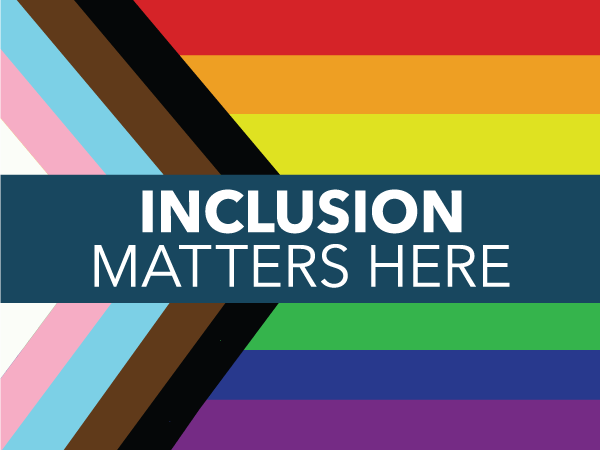What are your chances of acceptance?
Calculate for all schools, your chance of acceptance.

Your chancing factors
Extracurriculars.
How to Write the University of Maryland Essays 2023-2024
The University of Maryland does not have traditional supplemental essays, but it does have six required “complete this sentence” prompt. Your answers to these questions will need to be within 650 characters, but you’ll have plenty of space to reveal unique and distinctive parts of your personality to the admissions committee.
Make sure you give yourself enough time to craft thoughtful responses to these prompts, as you want to take full advantage of every opportunity you have to share something about yourself with the admissions officers. This unique kind of prompt presents a great opportunity to showcase something that might not be found elsewhere in your application.
Considering how competitive college admissions have become in just a few years, the more your responses stand out to admissions officers, the better your chances of admission will be.
Want to know your chances at UMD? Calculate your chances for free right now.
University of Maryland Supplemental Essay Prompts
Prompt 1: If I could travel anywhere, I would go to… (650 characters)
Prompt 2: The most interesting fact I ever learned from research was… (650 characters)
Prompt 3: In addition to my major, my academic interests include… (650 characters)
Prompt 4: My favorite thing about last Thursday was… (650 characters)
Prompt 5: Something you might not know about me is… (650 characters)
Prompt 6: Because we know that diversity benefits the educational experience of all students, the University of Maryland values diversity in all of its many forms. This includes (but is not limited to) racial, socio-economic, gender, geographical, and sexual orientation. We are interested in hearing about your own individual life experiences. In a few sentences, will you please describe how you have learned, grown, been inspired or developed skills through one or more components of diversity. (650 characters)
If I could travel anywhere, I would go to… (650 characters)
This is a very straightforward prompt. A strong response will identify a place, and share a little bit about why you’ve picked this particular place.
Keep in mind that your response should be unique to you and should teach your reader something about your personality or interests. If your answer sounds like something any random person might say, you need to work on specificity. Here are some examples to show you what we’re talking about.
Generic response: “Rome, because I’ve always wanted to see the Colosseum.”
Personal response: “Rome, because I’ve studied Latin since middle school. My father, a classics professor, spent so many happy hours teaching me how to read the works of Ovid, Virgil, Cicero, and the other greats, in their original language. Whenever we happen to pass by old churches or college buildings, we stop to read their insignias and mottos, which are most often in Latin. All these fond memories make me feel deeply connected to the Greco-Roman world, and I think that seeing historic sites like the Colosseum in person would augment the reading I’ve done and enrich my understanding of classical antiquity.” (598 characters)
The first response is very generic because just about anybody you ask would probably love to see the Colosseum. The second response answers the crucial question— why? —which should be at the core of your response. Your particular reason for choosing the place you choose is where your personality and individuality will shine through.
Obviously, the source of specificity will depend on you and your personal experiences. If you haven’t studied Latin (or if you studied it but didn’t like it), this response clearly wouldn’t work for you. Think about what truly interests you, then narrow your thinking down to places that are integral to that interest. For example, if you’re really invested in country music and its history, you might be particularly interested in visiting Nashville, the epicenter of that genre.
Finally, remember that this place doesn’t have to be a city. You could also say something like “The Pro Football Hall of Fame” or “Abbey Road Studios.” In fact, you even have the freedom to be a little more creative with your place in history. You might want to travel to a different time period entirely. The prompt posits that you can travel anywhere , but doesn’t specify that it has to be somewhere modern. Perhaps you love early R&B and disco music. You might want to travel to Detroit in the 1960s, when Motown Records was beginning to dominate those genres.
A word of caution: If you are going to get extra creative and pick a different time period, be sure to avoid generic clichés. For example, writing that you want to travel to the future—to give your future self advice, or to drive a flying car, or to see where climate change has gone, etc.—is a cliché and won’t contribute much to your application.
In terms of location, you probably shouldn’t go much bigger than a city. Saying something like “The United Kingdom” or “China” may make you sound clueless, as countries are too large and diverse to understand in their entirety with just one trip. Aiming for something too broad detracts from the specificity that a strong response to this kind of essay requires.
Rather than settling for a generic response, think about the main reason you personally want to go to this place, and narrow your response from there. Instead of “The United Kingdom,” you could write “The Scottish Highlands,” and instead of “China,” you could write “The Great Wall of China.”
The most interesting fact I ever learned from research was… (650 characters)
If you haven’t done research before, don’t worry. Most high school students haven’t done a serious research project, and nowhere does the prompt say that the research has to be yours.
Your response should show your reader that you are informed about the research that goes on at places like the University of Maryland. Of course, research is not the only thing universities do, but being surrounded by cutting-edge researchers in a wide range of fields is an opportunity that is difficult to find outside of a university campus.
We don’t mean to say you have to cite some dense, obscure study on molecular neuroscience. If that’s what you’re interested in, great! As long as your response is genuine, your chosen topic is fair game. Don’t make the mistake of writing about some deep scientific research if that isn’t what piques your interest, but be careful not to write about something too trivial either.
That being said, research is done in a vast array of subjects, so there’s no pressure to write about any one topic over another. Below are some examples of facts from a variety of fields that would work just as well as something from a hardcore STEM study.
- Consistent physical exercise throughout life correlates with better mental health in old age.
- Sea turtles use magnetoreception to find the same breeding grounds each year.
- The Egyptian pyramids have passages leading up from the burial chamber, which ancient Egyptians believed the dead pharaoh could climb through to join the gods in heaven.
Given the 650 characters you’re allotted, you should also share a short explanation of why you find this particular fact so interesting. For example, for the aforementioned sea turtle fact, you could write:
“[The most interesting fact I ever learned from research was…] sea turtles find the same breeding grounds each year with magnetoreception. Magnetoreception is a sense that allows turtles (and other animals) to perceive Earth’s magnetic field. Learning this fact made me truly appreciate nature’s diversity—turtles have an entire sense that we lack! This newfound appreciation created by one fact I just stumbled upon inspired me to embark on an exploratory journey that culminated in an internship at a local environmental center.” (467 characters, excluding the prompt’s characters)
Try to avoid picking a fact that is so long that you don’t have space to elaborate. 650 characters isn’t the largest amount of space, but simply stating your fact probably shouldn’t take up most of it. That being said, you don’t necessarily have to elaborate at a level as deep as the above example to have an excellent response. You may have a strong and thorough response with just 300 characters or so.
In addition to my major, my academic interests include… (650 characters)
The key phrase here is “in addition to my major.” Remember that you should use these supplemental prompts to share information about yourself that your reader cannot find elsewhere in your application.
So if your intended major is neuroscience, your answer here shouldn’t be “biology.” That is technically a different academic interest, but it doesn’t really tell your reader anything new. If they know you want to major in neuroscience, they can already safely assume you have at least some interest in biology.
Remember that your reader also has your high school transcript and activities list. Maybe math isn’t your intended major, but if you’ve taken AP math classes and done math camps during your high school summers, writing about math won’t be sharing something new with your reader. Your personal experiences already strongly indicate that you’re interested in math.
Your response also shouldn’t just be a list of other interests you have. A laundry list of interests won’t give the admissions committee any sense of why you’re interested in these things. The “why” is where your personality shines through. Without it, your reader won’t really have anything to take away from your response.
Now that we’ve covered what you shouldn’t do, let’s talk about how you should approach this prompt. As noted above, you want to pick an interest that is genuinely different from the things already seen in the rest of your application. As long as you’re honest, there’s no right or wrong way to do this. UMD wants to see that you’re academically inclined and intellectually curious, not that you’re only interested in one particular thing.
The second part of your response is the why . Say you’re a prospective history major and the other area you’re interested in is sports psychology. Your response might read something like this:
“[In addition to my major, my academic interests include…] sports psychology, because I was raised a diehard Miami Heat fan, and I’ve always wondered what helps some players thrive under pressure while others fold. I think that the field is interesting as it explores not only how players play, but also how they act in their personal lives in the spotlight. Even to those not interested in sports, the field is very useful in that its findings can be extrapolated and applied to society at large. After all, everyone wants to be able to perform at an optimal level.” (507 characters, excluding the prompt’s characters)
Alternatively, say you’re a prospective engineering major and you also have an interest in music theory. A strong response would be:
“[In addition to my major, my academic interests include…] music theory, because I’ve always wanted to know how movie and television composers use sound to enhance the emotional content of a scene. I’ve always been fascinated by the ways music is used to complement cinema. There are videos online in which a song is changed or removed from a scene, and something that simple can have a profound impact on the scene. I have been teaching myself guitar for four years, and even though I’m competent on a technical level, my theoretical understanding is lacking.” (501 characters, excluding the prompt’s characters)
These responses share interests that are not only not distinct from their respective majors, but that are also probably not discussed anywhere else in the application. It’s an unfortunate reality that college applications often capture only a thin slice of who you are while leaving out things like sports fandom, which may be a huge part of your personality and identity. If you can share one of those things here, your response will be all the better for it.
My favorite thing about last Thursday was… (650 characters)
Only you know what you did last Thursday, so the best advice we can give here is to not overthink your answer. Most people don’t do anything revolutionary on an average Thursday. UMD doesn’t expect you to have cured cancer on a normal day of the week. What they do expect is that you can engage with—and bring energy to—seemingly mundane situations. This is a useful skill that will help you thrive in college and beyond.
In order to address this prompt successfully, all you really have to do is describe the situation and give your reader some sense of what made it your favorite part of the day. Bear in mind that you don’t have to write about last Thursday literally. Think of something eventful that you took part in recently, but don’t feel restricted to the day mentioned in the prompt. UMD’s use of “last Thursday” is figurative. You can write about any average day that didn’t happen too long ago. No one is going to check that your event happened on a Thursday.
Here are some examples of weak and strong responses to this prompt.
Weak: “getting dinner with my friend.”
Strong: “having a picnic at dinnertime with my friend and watching the sunset. There’s nothing like munching on a DIY vegan charcuterie board and drinking sparkling cider at the golden hour. My friend and I grew up together and are as close as sisters. For years we did everything together, from shopping to cooking and from learning to swim to learning to drive. She and I used to hang out a lot before she moved, so I feel lucky whenever I get to spend quality time with her on an otherwise average day.” (495 characters)
For this particular prompt, even a few extra details—like those that are included in the strong example—can go a long way. Most people enjoy getting dinner with friends, but the strong response shows the reader why , for you personally, this particular dinner was so meaningful.
As we mentioned at the beginning of this post, 650 characters is more than you might assume. Take advantage of the space you have to make your response as personal as possible, but also don’t write more than you need to just to reach the limit. Based on the rest of your application, the admissions committee has some understanding of what you’re like in the classroom or on the basketball court. Now show them what you’re like on a regular old Thursday.
Something you might not know about me is… (650 characters)
A prompt this open-ended can be overwhelming at first. But as we advised with the previous prompt, don’t overthink your answer! This fun fact doesn’t have to be anything crazy or an attempt to impress the admissions committee—that’s what the rest of your application is for. Just share something unique to you that isn’t already discussed elsewhere in your application.
This last part about being unique is key—if your answer to Prompt 3 (the one about academic interests) was something about liking astronomy, your answer here shouldn’t be something about stargazing every night. Remember that you only have so many opportunities to share information about yourself with the admissions committee, so take advantage of each one.
That being said, you have free rein to write about pretty much anything! Below are some examples of potential topics you could respond to this prompt with. Your response also may look nothing like these, which is completely fine. We just want to get your mental gears turning by giving you a sense of what a good response might begin with.
Something you might not know about me is…
- I can do a double backflip off a diving board.
- I have every word to Taylor Swift’s album Reputation memorized.
- For my eighteenth birthday, I went skydiving and passed out in the air.
- I’ve won my fantasy football league three years in a row.
- Every New Year’s Day, my dad cracks the ice on the pond near our house and my family does a polar plunge together.
Since you have a longer character count, you should elaborate on your fun fact, whatever it may be. For example, a hypothetical student might extend the above skydiving example and write something like this:
“[Something you might not know about me is…] for my eighteenth birthday, I went skydiving and passed out in the air. As a child, I saw a show about skydiving and became so infatuated with the idea that it became the one thing I had to try. My parents were not thrilled but agreed that I could try when I was 18. The time finally came, and the plane ascended with me finally on it. I was signed up for a tandem jump where I was tethered to an instructor. We jumped, and some combination of excitement, dread, and altitude made me pass out, so I missed most of the experience! By the time I came to, we were near the ground already, so I definitely need to try this experience again someday.” (644 characters, excluding the prompt’s characters)
You might not use all 650 characters to respond to this prompt, and that’s okay. Don’t try to reach the character limit and end up rambling or writing something confusing. For example, imagine if the backflip example above read like this:
“[Something you might not know about me is…] I can do a double backflip off a diving board. One time I was at the pool and kept making the lifeguard nervous every time I did it. It ended up being fine though, because it’s a skill I had gotten really good at by then.” (221 characters, excluding the prompt’s characters)
By the end of this response, a reader might not even remember what the original fun fact was, even though it’s only 221 characters.
Finally, the examples above hopefully show that your fun fact can be just that—fun. You don’t have to be super serious with every single supplemental essay prompt you come across. A more lighthearted response can actually be a good thing—college applications are generally quite dry, so it can be a good idea to remind your reader that you’re more than a GPA and a Common App essay you’ve revised 43 times.
Because we know that diversity benefits the educational experience of all students, the University of Maryland values diversity in all of its many forms. This includes (but is not limited to) racial, socio-economic, gender, geographical, and sexual orientation. We are interested in hearing about your own individual life experiences. In a few sentences, will you please describe how you have learned, grown, been inspired or developed skills through one or more components of diversity. (650 characters)
This is one instance of the very common diversity prompt . When colleges have a diversity prompt, they want to know about your own personal background and how it has influenced your worldview and perspectives.
In June 2023, the United States Supreme Court struck down the use of affirmative action in college admissions. The ruling, however, still allows colleges to consider race on an individual basis, which is one reason many schools are now including diversity prompts as one of their supplemental essay prompts. If you feel that your racial background has impacted you significantly, this is the place to discuss that.
In general, such a common prompt can be approached with a traditional answer. You might consider answering this prompt with what you think is the most important part of your identity, then a small discussion about how that aspect of diversity is relevant to you and your general life experiences.
Such a response might be written about one of the following scenarios:
- Using your fluency in another language to help members of a specific community.
- Interpreting a text in class differently from your classmates because of your ethnic culture.
- Having a friend of a different background who has changed your perspective on something important (this speaks to the “been inspired” part of the prompt).
- Having an illness or disability that helps you view accessibility through a different lens than your peers.
- Being part of a niche interest group/fandom and trying to represent the group faithfully when talking to people who aren’t members of it.
Simply listing things that generate diversity should be avoided. Sure, diversity includes different ethnicities/races, gender identities, sexual orientations, countries of origin, and languages, but writing that laundry list out doesn’t contribute much to your application.
Also, bear in mind that the traditional markers of diversity aren’t the only ones you can discuss. There are other aspects of identity that contribute to a diverse campus, including socioeconomic classes, hometowns, illnesses/disabilities, and even interests or hobbies.
Diversity encompasses all the aforementioned attributes, but you should strive for individuality and specificity in your response. This prompt, like all the others, is an opportunity to showcase your unique life perspective. You don’t want to waste this opportunity by writing down some bland dictionary definitions. Think of what diversity means to you and what you consider to be a particularly significant aspect of diversity. From there, think of personal anecdotes or stories about how that aspect of diversity has contributed to your growth or development as a person.
Where to Get Your University of Maryland, College Park Essays Edited
Do you want feedback on your UMD essays? After rereading your essays over and over again, it can be difficult to gauge where your writing needs improvement, especially since these prompts are so short. We created our free Peer Essay Review tool to help students like you get a free review of your essay from another student. You can also improve your own writing skills by reviewing other students’ essays.
If you want a college admissions expert to review your essay, advisors on CollegeVine have helped students refine their writing and submit successful applications to top schools. Find the right advisor for you to improve your chances of getting into your dream school!
Related CollegeVine Blog Posts

Want more information about our majors?
Want to learn more about life as a Terp?
Ready to apply?
Need more information on cost of attendance at UMD, financing your education and merit scholarships?
Update to Enrollment Confirmation Deadline
Due to the shifted FAFSA 2024-2025 timeline;
1. We have extended our 2024-25 FAFSA filing priority deadline to April 1, 2024 .
2. We have extended our freshmen Fall 2024 enrollment confirmation deadline to May 15, 2024
Essay Questions
The essay is just one of the 24 factors we use as part of our holistic application review.
The essay provides you with the opportunity to showcase aspects of your personality and experiences that fit well with the University of Maryland (UMD) community. When considering your approach to your essay, take time to think about your answer, making it creative and succinct.
Please answer one of the following essay questions. Make sure to include the question itself at the start of your essay. Your essay should be no more than 650 words; the question will not be included in the essay total word count.
- Some students have a background, identity, interest, or talent that is so meaningful they believe their application would be incomplete without it. If this sounds like you, then please share your story.
- The lessons we take from obstacles we encounter can be fundamental to later success. Recount a time when you faced a challenge, setback, or failure. How did it affect you, and what did you learn from the experience?
- Reflect on a time when you questioned or challenged a belief or idea. What prompted your thinking? What was the outcome?
- Reflect on something that someone has done for you that has made you happy or thankful in a surprising way. How has this gratitude affected or motivated you?
- Discuss an accomplishment, event, or realization that sparked a period of personal growth and a new understanding of yourself or others.
- Describe a topic, idea, or concept you find so engaging that it makes you lose all track of time. Why does it captivate you? What or who do you turn to when you want to learn more?
- Share an essay on any topic of your choice. It can be one you've already written, one that responds to a different prompt, or one of your own design.
Please answer the following question. Students who have been out of school for several years or who have a personal circumstance that affected performance, may wish to address that situation in their essay. Your answer should be no more than 300 words.
- Please describe your past academic experiences and your reasons for wishing to enroll at UMD at this point in your academic career.

There is a lot more to learn about UMD, so let's stay in touch!
Join Our Mailing List

University of Maryland Supplemental Essays 2023-24
Wondering how to write your University of Maryland supplemental essays? If so, you’re in the right place. The UMD essay prompts are unique, both in length and style. In fact, all of the UMD supplemental essays are actually short-answer questions. So, applicants need to be strategic about their responses to the UMD prompts if they want to make their application stand out.
In this guide to the UMD essays, we’ll go beyond just introducing you to the UMD essay prompts. You’ll find tips for building your short answer responses and for writing your all-important personal statement. If you are considering transferring to UMD, we also go over the UMD supplemental essays for transfer students. Finally, we will connect you to several other resources that can aid you in your essay writing journey.
By the end of this guide, we hope to have answered most of your questions about applying to UMD. Then, you’ll have the tools you’ll need to write excellent University of Maryland supplemental essays. But, before we jump in, let’s start with some UMD Admissions Quick Facts.
UMD Supplemental Essays: Quick Facts
University of maryland admissions quick facts.
- University of Maryland Acceptance Rate: 44% – If you’re considering applying early, note that the early acceptance rate at UMD is 47.7%.
- 1 (~650 word) personal essay
- 6 (~650 character) short answer questions
- University of Maryland Application: Students must submit their UMD application through the Common Application or the StandOut Admissions Network . Prepare your required application materials , including your University of Maryland supplemental essays, before applying .
- Early Action: November 1
- Regular Decision: January 20
- University of Maryland Essay Tip: Don’t overthink your responses to the University of Maryland supplemental essays. Go with an answer that feels authentic and then write concise and clear answers to the prompts.
Please note that essay requirements are subject to change each admissions cycle, and portions of this article may have been written before the final publication of the most recent guidelines. For the most up-to-date information on essay requirements, check the university’s admissions website.
Does the University of Maryland have supplemental essays?

Yes – there are six University of Maryland supplemental essays. However, the UMD supplemental essays are very different from most other schools’ essay prompts. Let’s look at a few ways they differ.
Short Essays
First, the University of Maryland supplemental essays are very short. On average, supplemental essays range in word count from 150-300 words. The University of Maryland supplemental essays are described as short answer questions, and rightly so. The maximum length is 650 characters, which amounts to anywhere from 92 to 163 words, depending on your word length. With such limited space, you’ll need to be concise in your answers to the UMD College Park supplemental essays.
Quirky Questions
Secondly, the University of Maryland supplemental essays are focused on understanding who you are through different snapshots of your life. Many supplemental essays focus on your academic interests or why you want to attend a given college. However, the UMD supplemental essays ask seemingly random questions like “What did you do last Thursday?”. While the UMD essay prompts might seem random, they’re there for a reason: to take the pressure off! These fun prompts allow students to showcase a realistic and holistic perspective on who they are beyond being a student.
Six Prompts
Finally, there are six UMD supplemental essays. Most commonly, schools have one to two required supplemental essays and potentially an optional one. By offering six University of Maryland supplemental essays, UMD seeks to give students many ways to showcase who they are. And, since they’re all required, applicants have no choice but to make the most of their responses.
Next, let’s look at each of the UMD College Park supplemental essays and talk about how you might respond to each one.
UMD Supplemental Essay Requirements

As we shared above, there are six required University of Maryland supplemental essays. The word limit for each is 650 characters (between 92 and 136 words). In this section, we will start by breaking down what each of the UMD essay prompts is looking for. Then, we’ll get into how you can provide an answer that will impress University of Maryland admissions officers.
Here are the six UMD essay prompts, followed by some guidance about how to respond.
University of Maryland Prompt 1
If i could travel anywhere, i would go to….
The first of the UMD supplemental essays is a fun one. With this question, the school is looking to see your adventurous spirit come through. Answer authentically, while being specific. Avoid being too general by stating the name of a continent or a country. Instead, choose a city, town, or even neighborhood. And, avoid cliches that are overused, such as “I would travel to another time period.” You can generally avoid falling into the trap of cliches if you’re specific and answer in a heartfelt, honest manner.
University of Maryland Prompt 2
The most interesting fact i ever learned from research was… .
In the second of your University of Maryland supplemental essays, UMD is looking for evidence of your curious mindset. Feel free to interpret the word “research” broadly. While actual scientific research is valid to highlight, it’s not the only avenue to choose. You could also talk about a topic you did a deep dive on the internet to learn more about. Again, be specific about why this fact interested you.
Second, connect your interest back to a personal value or an academic subject you enjoy. For example, maybe you were fascinated to learn that the Great Pacific Garbage Patch contains enough trash to fill 500 Jumbo Jets. You’d want to then speak to why this was important to you and if learning it had any impact on your future thoughts or actions.
University of Maryland Prompt 3
In addition to my major, my academic interests include… .
The third of your UMD supplemental essays is focused on your academic interests. The key to this prompt are the words, “In addition to my major.” This question is looking for insight into other fields of interest besides your stated major. The University of Maryland supplemental essays create space for you to highlight your various interests and demonstrate your intellectual curiosity.
To answer this question, consider other academic subjects that interest you. Note that you do not have to list a field, like mechanical engineering or business. Instead, you can provide specific topics that interest you. For example, maybe your academic interests include reading Shakespearean plays or learning Italian. Include a few sentences about why you are interested in this topic. Do you have fond memories of acting out Shakespearean plays in sophomore English? Maybe you have plans to one day travel to Florence, so learning Italian inspires you. Whatever you choose, be genuine.
University of Maryland Prompt 4
My favorite thing about last thursday was… .
Some students may read this UMD supplemental essay prompt and wonder why the school wants to know what happened last Thursday. The answer is simple – they want to know what you really value in your daily life. Don’t overthink your response. Rather, try to reflect upon your previous Thursday with wonder. What did you enjoy about that day? What was exciting, inspiring, or special? Maybe the weather was so cool and crisp that you felt inspired to go for a run. Or perhaps, you found out a friend won an award, and it made you happy to see that person honored.
If you can’t remember what you did last Thursday, then pick any recent day you do remember. The school does not actually care about Thursday in particular, but rather the way in which you reflect upon your life. Use sensory details and explain why your answer is meaningful to you. Remember, even the little things can give your University of Maryland supplemental essays extra flair.
University of Maryland Prompt 5
Something you might not know about me is… .
For some students, the most challenging of the UMD College Park supplemental essays is this one because of its open-endedness. However, rather than stress about trying to guess what might impress University of Maryland admissions officers, simply be yourself. This prompt allows you to highlight something that does not fit into any of the other prompts. So, you might wish to answer this question last.
Indeed, there is no “right” answer to this question. But you should still take time to think of something about yourself that is actually meaningful to you. Maybe you love waking up early on Saturdays to have pancakes with your family because it reminds you of how much you are loved. Maybe you paint portraits of your favorite hip-hop artists because you admire their music so much. As with all the UMD supplemental essays, being genuine and explaining why you chose your answer will be key.
University of Maryland Prompt 6
Because we know that diversity benefits the educational experience of all students, the university of maryland values diversity in all of its many forms. this includes (but is not limited to) racial, socio-economic, gender, geographical, and sexual orientation. we are interested in hearing about your own individual life experiences. in a few sentences, will you please describe how you have learned, grown, been inspired or developed skills through one or more components of diversity. .
The last, but certainly not least important, of the UMD College Park supplemental essays is the diversity question. The first step in answering this question is to remember that diversity is a broad term. Diversity can include things like your race, culture, or socioeconomic status. But it can also include where you grew up, unique childhood experiences, or challenges you may have faced.
The key is to reflect upon your life experiences and how they have shaped you. For example, maybe you grew up in a family of self-starters, and this shaped your own desire to one day own a business. Or perhaps you were very sick as a child, and overcoming your illness taught you about patience and self-care. Whatever you choose, be sure to explain what this aspect of your life experience taught you.
Besides your six University of Maryland supplemental essays, you will also submit a personal statement. Keep reading to learn more about what goes into your personal statement.
University of Maryland Personal Statement

In contrast to the six UMD College Park supplemental essays, your personal statement can be up to 650 words long. As such, you have much more space to express your thoughts. Your essay will respond to one of the seven Common App essay prompts.
To clarify, your University of Maryland personal statement is the same as your Common App personal statement. As such, your UMD personal statement will not be school-specific, but will instead contribute to your overall college application brand . So, think of your personal statement as a chance to write about a key part of your identity.
A well-written personal statement usually contains a story-like approach. This includes engaging elements like a hook and a story arc with a beginning, middle, and end. Many personal statements also include reflective moments where the student shares what they learned from the experience they are sharing. Read more about how to begin in this CollegeAdvisor resource on How to Start a Personal Statement.
UMD Essay Requirements – Transfer Students
If you are a transfer student, your University of Maryland supplemental essays will include a college transfer essay. What constitutes a transfer student? A transfer student is:
- Any student that has at least 12 semester or 18 quarter hours after high school graduation AND
- Is applying for admission at a new college
Your transfer application must accomplish a slightly different task of explaining to UMD why you wish to transfer schools.
Instead of a personal statement, transfer students will write a college transfer essay for their transfer application. Below is the prompt:
University of Maryland Transfer Students Essay Prompt
Please describe your past academic experiences and your reasons for wishing to enroll at umd at this point in your academic career. (300 words or less).
To effectively answer this question, transfer students must be clear about what specific aspect of studying at UMD appeals to them. Students who have been out of school for some time or have faced academic challenges should share more about those experiences in their responses. While there may be numerous reasons why you want to transfer, avoid speaking poorly of another school. Instead, focus on what makes you believe you will thrive at UMD.
Please note that your transfer application can only be submitted through the StandOut Admissions Network platform. The early action deadline for submitting a transfer application is:
- March 1 of the spring before the fall semester in which you wish to enroll OR
- August 1 of the summer before the spring semester you wish to enroll
Next, we will explore some tips for writing your UMD supplemental essays.
Tips for approaching the UMD Supplemental Essays

Without a doubt, it can be daunting to see the six UMD essay prompts you have to respond to. After all, that’s a lot of UMD supplemental essays! Below are some tips for ensuring your responses are interesting and showcase the best version of yourself to UMD Admissions.
1. Be authentic
As always, authenticity is key. With these UMD College Park supplemental essays, the school is really trying to get to know multiple sides of you. If you try too hard to impress them, you are defeating the purpose of the UMD essay prompts. Ask friends and family to double-check your ideas and see whether they sound like you. Those who know you best can give valuable input.
2. Write first, then edit down
Some students feel frozen when they see the word count, not knowing how they can respond with only 650 characters. However, don’t worry about the length of your University of Maryland supplemental essays. Instead, write drafts that are as long as you need them to be. Then, go through your drafts and find the most critical ideas. These can be interesting details or insights that you believe are important.
3. Avoid repetition
Since there are six UMD supplemental essays, you might be tempted to repeat topics or ideas. However, each 650-character essay is valuable real estate. Show something new about yourself in each of your UMD supplemental essays. Remember, Admissions is reading all six as a collection, not each one individually!
4. Share your why
For each of your University of Maryland supplemental essays, answer the question directly but be sure to share your why . Indeed, sharing why you chose an answer can often say as much or more about you than the answer itself. If I tell you my favorite color is blue, you’ve learned one simple fact. Now let’s say I add that my grandmother always wore blue at Sunday dinner and it reminds me of her. Now, you’ve learned that I value my family, miss my grandmother, and am nostalgic for dinners with her.
Next, we will take a deeper look at what the University of Maryland – College Park is known for. With this knowledge, you can write University of Maryland supplemental essays that demonstrate qualities that align with the school’s values.
What is the University of Maryland – College Park known for?

If you are considering applying to the University of Maryland, there is a lot you should know about the school. For one, the University of Maryland – College Park is a competitive public institution. According to U.S. News , the UMD acceptance rate is 44% and the school ranks #19 among top public universities . Similarly, Forbes ranked UMD #34 amongst its top colleges for 2023. As such, writing strong UMD supplemental essays is important to stand out against other qualified applicants.
The University of Maryland – College Park is known for being the first campus in the UMD college system . The school is located in the suburb of College Park, Maryland. However, students also have easy access to the big cities of Baltimore and Washington, D.C. With over 30,000 undergraduates, UMD is a large campus with 12 colleges and more than 800 clubs and organizations. UMD is known for its excellent James Clark School of Engineering and Robert H. Smith School of Business, as well as its research initiatives. Lastly, UMD is known for its sustainability initiatives, with a plan in place to be carbon neutral by 2050.
As such a large school with so many resources, UMD College Park is likely to be a great fit for your studies . If you want to attend, keep reading to learn more about how to make your UMD supplemental essays stand out.
How to make your University of Maryland Essays stand out!

If you want to beat the UMD acceptance rate, you’ll want your UMD supplemental essays to stand out from the pack. Here are a few tips for ensuring that they do:
1. Edit them well
Your UMD College Park supplemental essays are a chance to showcase who you are. But, they are also a chance to showcase your writing skills. Be sure to spend time editing for proper grammar, varied sentence structure, and clear transitions. Consider reading your essays out loud to catch errors. Also, ask a trusted advisor, like your CollegeAdvisor admissions expert or a teacher, to review your essays.
2. Include specific details
In each of your responses, include details that bring your response to life. Only having 650 characters for your UMD supplemental essays may feel limiting. But you can still include vivid imagery that helps to add some color to your essays.
3. Showcase your unique personality
As you write each of your UMD supplemental essays, make sure your voice is coming through. Avoid letting someone else edit your essays to the point where the voice no longer sounds like yours. The University of Maryland admissions officers want to know who you are, not an uncle or a friend.
Next, we have even more places to find expert advice on how to write your University of Maryland supplemental essays.
More supplemental essay resources from CollegeAdvisor
Below are three CollegeAdvisor resources that might help you as you write your UMD College Park supplemental essays.
- 8 College Essay Topics : This resource covers the most common types of supplemental essays. Two of the types described in this article – the personal statement and the diversity essay – are ones you will have to write for your UMD College Park supplemental essays.
- How to Write Better Essays : This article provides tips for how to write essays of all kinds. From tips about your writing approach to ideas for how to choose topics, this article covers a lot of essay-writing ground. Review it before writing your University of Maryland supplemental essays.
- Common App Essay Examples : Looking for examples of strong personal statements? This article will highlight ten of them and explain why each one was successful. Understanding what makes an essay strong can help you write even stronger University of Maryland supplemental essays.
Continue browsing through CollegeAdvisor’s resources to find lots of free advice for your University of Maryland supplemental essays.
The University of Maryland Supplemental Essays – Final Thoughts
Now that you’ve read this guide on the University of Maryland supplemental essays, you should be ready to start writing. In this article, we reviewed the UMD essay prompts, both for a freshman UMD application and a transfer UMD application. We also broke down tips for writing your UMD College Park supplemental essays.
Inevitably, the college process has a lot of unknowns, which can be stressful. However, writing good University of Maryland supplemental essays is entirely in your control. With this guidance and support from trusted advisors, you can beat the UMD acceptance rate and pursue your college dreams.

This essay guide was written by senior advisor, Courtney Ng . Looking for more admissions support? Click here to schedule a free meeting with one of our Admissions Specialists. During your meeting, our team will discuss your profile and help you find targeted ways to increase your admissions odds at top schools. We’ll also answer any questions and discuss how CollegeAdvisor.com can support you in the college application process.
Personalized and effective college advising for high school students.
- Advisor Application
- Popular Colleges
- Privacy Policy and Cookie Notice
- Student Login
- California Privacy Notice
- Terms and Conditions
- Your Privacy Choices
By using the College Advisor site and/or working with College Advisor, you agree to our updated Terms and Conditions and Privacy Policy , including an arbitration clause that covers any disputes relating to our policies and your use of our products and services.
University of Maryland Supplemental Essays 2024 | Strategies and Insights for Success

With over 56,000 applicants vying for a spot each year, the University of Maryland—College Park’s admissions process might seem like a numbers game focused solely on GPA and SAT scores. However, in a testament to their commitment to a holistic review process, prospective Terrapins are also tasked with completing six short “Complete this Sentence” supplemental essays alongside the 650-word Common App essay. As UMD’s acceptance rate continues to drop—it was just 34% last year—applicants must seize the opportunity presented by these short answer essays to differentiate themselves.
Let’s delve into the UMD supplemental essays for the 2023-24 admissions cycle and explore tips on how to approach each one.
Also read University of Maryland Acceptance Rate | Strategies and Insights for Admission Success 2024
University of Maryland Supplemental Essays
1) If I could travel anywhere, I would go to… (650 characters)
While it’s tempting to pick a well-known destination, this prompt invites creativity. Consider journeys beyond geographical borders—exploring a historical era, delving into a niche interest, or engaging in a unique cultural experience. Whether it’s unearthing fossils in Montana or conversing with historical figures, your choice should reflect depth and curiosity.
2) The most interesting fact I ever learned from research was… (650 characters)
Research isn’t limited to science labs. From psychological insights to historical revelations, fascinating discoveries abound. Share a compelling finding that resonated with you, regardless of the field. Remember, it’s about the significance of the knowledge gained, not the accolades earned.
3) In addition to my major, my academic interests include… (650 characters)
Embrace the opportunity to showcase your intellectual breadth. Whether it’s exploring interdisciplinary connections or pursuing passions outside your major, delve into diverse academic interests. From philosophy to artificial intelligence, highlight the richness of your scholarly pursuits beyond the confines of your chosen field.
UMD Supplemental Essays
4) My favorite thing about last Thursday was… (650 characters)
Ditch the mundane details and delve into the significance of a recent moment. Whether it’s a small victory, a meaningful interaction, or a moment of personal growth, reflect on what made last Thursday memorable. Use vivid language to convey the essence of this cherished experience in a brief snapshot.
5) When I think of diversity, I think of.. (650 characters)
Move beyond textbook definitions and share your personal perspective on diversity. Consider how diversity enriches the fabric of society and shapes your worldview. Whether it’s cultural heritage, individual experiences, or varied perspectives, articulate what diversity means to you and how it enhances the University of Maryland community.
6) Because we know that diversity benefits the educational experience of all students, the University of Maryland values diversity in all of its many forms. This includes (but is not limited to) racial, socio-economic, gender, geographical, and sexual orientation. We are interested in hearing about your own individual life experiences. In a few sentences, will you please describe how you have learned, grown, been inspired or developed skills through one or more components of diversity. (650 characters)
Reflect on how diversity has shaped your personal journey and contributed to your growth. Share a specific experience or insight that has broadened your perspective or deepened your understanding of others. Whether it’s advocating for inclusivity, navigating cultural differences, or fostering empathy, highlight the ways in which diversity has influenced your development and prepared you to thrive in a diverse academic environment.
Also see 25 Most Affordable And Beautiful Colleges in Appalachia 2024
How Important are the UMD Supplemental Essays?
In the evaluation process at the University of Maryland, the supplemental essays carry significant weight. They are classified as an “important” factor, placing them alongside crucial considerations like class rank, recommendations, talent/ability, first-generation status, and state residency. Notably, these essays are weighted higher than factors such as extracurricular activities, legacy status, race/ethnicity, or work experience. Therefore, crafting thoughtful and compelling responses to the UMD supplemental prompts is essential for applicants aiming to stand out in the admissions process.
While the University of Maryland’s admission process considers various factors, the supplemental essays play a crucial role in showcasing applicants’ personalities, interests, and potential contributions to the campus community. As UMD becomes increasingly competitive, applicants must seize the opportunity presented by these essays to demonstrate their uniqueness and suitability for the university. By carefully crafting their responses, applicants can significantly enhance their chances of success in gaining admission to the University of Maryland.
How to Get Into the University of Maryland: Acceptance Rate & Strategies
July 10, 2023

Prior to the turn of the new millennium, the University of Maryland-College Park welcomed 75% of the applicant pool into the Terrapin family. In recent years, the University of Maryland acceptance rate has been as low as 41% and the number of applicants has more than doubled since the end of the Clinton Presidency. A generation ago, many Maryland freshmen possessed solid-but-unspectacular academic credentials; in 2023, first-year Terrapins sport a median SAT score of 1440 and an average weighted GPA of almost 4.4. Yes…it’s really THAT competitive. No wonder the UMD acceptance rate has been trending sharply downward.
Given this sharp rise in selectivity, the intent of this article is to give those considering applying to the University of Maryland an understanding of the following topics:
- University of Maryland College Park acceptance rate
- University of Maryland’s Early Action acceptance rate
- SAT, GPA, and class rank of accepted University of Maryland applicants
- Admissions trends
- University of Maryland’s system for rating applicants
- A look at the demographics of current University of Maryland undergraduates
- The percentage of accepted students that attend the University of Maryland (yield rate)
- Tips for applying to the University of Maryland
- UMD Supplemental Essay Advice
- How to assess whether applying to the University of Maryland is even worth the $75 application fee (for you)
Many students applying to UMD College Park may also find the following blogs to be of interest:
How to Get Into:
- University of Michigan
- Penn State University
- George Washington University
Let’s begin with an examination of the most recent admissions data.
University of Maryland Acceptance Rate
There were 56,637 applications for admission into the Terrapin Class of 2026. Only 25,201 or 44% of that group were accepted to the College Park campus. Maryland does grant favor in the admissions process to in-state applicants but, unfortunately, they do not release the in-state versus out-of-state admission rates so we are unable to quantify that advantage.
University of Maryland Early Action Acceptance Rate
Based on the most recent data available, applying to the University of Maryland during the Early Action round is almost a requirement. The Class of 2025 saw 61% of EA applicants accepted and just 38% of Regular Decision applicants achieving the same positive result. A stunning 90%+ of the incoming class was accepted via Early Action. The overall acceptance rate for that cohort was 52%.
University of Maryland Admissions – SAT, GPA, and Class Rank
For Class of 2025 members, the mid-50% SAT range for enrolled freshmen was 1370-1510, the ACT range was 30-34. Moreover, 85% possessed a weighted GPA of 4.0 or greater. Among enrolled 2022-23 first-year students, an impressive 66% hailed from the top 10% of their high school class, while 90% earned a place in the top 25%.
Admissions Trends & Notes
- Firstly, 76% of current undergraduates are Maryland residents.
- Additionally, there are international students from 116 countries.
- The number of applicants rose from roughly 32,000 to over 56,000 over the fast few years.
- 14.% of freshmen entered with enough college credit to begin with sophomore standing.
- Lastly, UMD- College Park was test-optional for the fall 2023 admissions cycle and will be again for the 2024 and 2025 cycles as well.
How the University of Maryland Rates Applicants
University of Maryland considers only three factors as “very important” to the admissions process: rigor of high school course load, GPA, and standardized test scores. Items that are “important” as part of the admissions process are: class rank, first-generation status, essays, recommendations, talent/ability, first-generation status, and state residency. “Considered” factors are: geographical residence, extracurricular activities, character/personal qualities, alumni relation, racial/ethnic status, work experience, and volunteer work.
Diving a bit deeper, the university does list additional factors that are considered during their review process. Some of these are identical to those listed above, but many are different, shedding a bit of additional light on how holistic application reviews are conducted:
UMD Acceptance Rate (Continued)
Holistic reviews include:.
- Progression of performance
- The breadth of life experiences
- Recognition of special achievements
- Extenuating circumstances
- Socio-economic background
- Written expression of ideas (as demonstrated in the essay)
- Community service
- Demonstrated leadership
- Learning differences
- Family educational background
- English as a second language/Language spoken at home
Straight from the UMD admissions office: “The undergraduate admissions process is rigorous and individualized. As the university must make fine distinctions among large numbers of highly qualified applicants, the ability to assess consistently all information presented in the application becomes increasingly important. Therefore, the university employs a holistic review process that engages the expertise of professional educators whose judgments—based upon consideration of each applicant’s credentials measured by all admissions criteria—build an entering class that will best complement the existing student body and meet the university’s mission objectives.”
It is also worth highlighting that recruited athletes enjoy a huge edge. This is because the University of Maryland takes great pride in its 19 NCAA Division I sports teams . Overall, more than 700 student-athletes are presently attending the university. Lastly, for advice about how to stand out on the extracurricular front, check out our previous blog entitled How Many Extracurricular Activities Do I Need for College?
University of Maryland Demographics
Let’s now take a look at the demographics of the University of Maryland undergraduate student body.
The states that send the highest number of students to UMD are:
- Pennsylvania
The fewest students come from the following states:
- North Dakota
- South Dakota
The greatest number of international students come from the following countries:
- South Korea
In terms of ethnic identity, the breakdown is as follows:
- Hispanic: 10%
- African American: 12%
- Two or More Races: 5%
- International: 3%
A look at the gender split reveals that university enrolls more men than women.
University of Maryland’s “Yield Rate”
University of Maryland’s yield rate is 23%. In other words, 23% of those accepted went on to enroll. This figure is significantly lower than other powerhouse state universities like the University of Florida, University of Michigan, and UVA.
Tips for Applying to the University of Maryland
If you plan on joining the 56,000+ University of Maryland hopefuls for the next admissions cycle, you should know the following:
- Firstly, APPLY EARLY by November 1! This one is in all caps in case you are skimming and missed our previous look at EA vs RD acceptance rates.
- The University of Maryland does not use interviews as part of its evaluation process.
- Additionally, the University of Maryland does not consider “ demonstrated interest ” so you will not be judged on whether or not you made a campus visit, contacted an admissions officer, etc.
- Prospective Terrapins can apply through the Common Application or Coalition Application.
- In short, the preferred major you list is not a factor in the general admissions process. However, applicants to majors that are “Limited Enrollment Programs” will face additional departmental scrutiny due to limited space. For a full list of LEPs, click here .
- Lastly, make sure to dedicate sufficient time and effort to the “Complete this Sentence” short responses required by the University of Maryland. In the 2021-22 cycle, they are as follows:
At the University of Maryland, we encourage our students to go beyond the classroom to engage in opportunities that further both their academic and personal growth.
To tell us more about yourself, please complete the following sentences using only the space provided (160 characters).
- If I could travel anywhere, I would go to…*
- The most interesting fact I ever learned from research was…*
- In addition to my major, my academic interests include…*
- My favorite thing about last Monday was…*
- Something you might not know about me is…*
For College Transitions advice on how to address all five University of Maryland-College Park essays, visit our blog: University of Maryland Supplemental Essay Prompts and Tips .
Umd acceptance rate – final thoughts .
In conclusion, those with SAT/ACT scores within the mid-50% mark for the University of Maryland who are also at the very top of their respective high school class are absolutely viable candidates to this excellent institution. As the school states, “Admitted freshman students have a strong A-/B+ or better average in their high school coursework and are enrolled in the most challenging courses available to them including honors, Advanced Placement or International Baccalaureate courses.”
Of course, it goes without saying that all teens applying to a school of the University of Maryland’s caliber also need to also have a proper mix of “target” and “safety” schools on their college list. More on creating a balanced college list can be found here .
- Application Strategies
- College Search/Knowledge

Andrew Belasco
A licensed counselor and published researcher, Andrew's experience in the field of college admissions and transition spans two decades. He has previously served as a high school counselor, consultant and author for Kaplan Test Prep, and advisor to U.S. Congress, reporting on issues related to college admissions and financial aid.
- 2-Year Colleges
- Best Colleges by Major
- Big Picture
- Career & Personality Assessment
- College Essay
- College Success
- Costs & Financial Aid
- Dental School Admissions
- Extracurricular Activities
- Graduate School Admissions
- High School Success
- High Schools
- Law School Admissions
- Medical School Admissions
- Navigating the Admissions Process
- Online Learning
- Private High School Spotlight
- Summer Program Spotlight
- Summer Programs
- Test Prep Provider Spotlight

“Innovative and invaluable…use this book as your college lifeline.”
— Lynn O'Shaughnessy
Nationally Recognized College Expert

College Planning in Your Inbox
Join our information-packed monthly newsletter.
Sign Up Now

Responding to the University of Maryland Essay Questions

Written by Abigail Anderson on October 19th, 2018
- essay prompts ,
- writing college essays ,
- If I could travel anywhere, I would go to...
- The most interesting fact I ever learned from research was...
- In addition to my major, my academic interests include...
- My favorite thing about last Wednesday was...
- Something you might not know about me is...
- “Applicants…will enrich and benefit from the campus learning environment and the entire student body.”
- “Our students are smart, involved, curious, and innovative.”
- “While [grades and SAT scores] are important, we also want to know about your interests and background and what makes you unique.”
- “The University educates students and advances knowledge in areas of importance to the State, the nation, and the world.”
- Think strategically about how you can reflect UMD’s own values back to them in your answers.
- Don’t be overly strategic to the point where your answers sound disingenuous or made up just for your application. UMD makes it very clear that their application review process is holistic and they are simply trying to learn more about their applicants. Your answers should sound (reasonably) like a 17-year-old.
Find out where our team of admissions decision-makers came from and why they joined College Coach.

amet, adipisicing elit sed do eiusmod tempor incididunt?
Follow these pre-application steps to help your student stay on track for admissions success., related resources.

Read | Posted on November 17th, 2023
Are Optional College Essays Really Optional?

Read | Posted on November 6th, 2023
4 Tips for Writing the University of California Essays

Read | Posted on September 21st, 2023
Speak Your Truth: Sharing Your Identity in College Essays
Browse categories.
- Applying For Financial Aid
- Choosing The Right College
- College Admissions Consulting
- College Applications
- College Coach Mentionables: News & Events
- College Entrance Exams
- College Essays
- College Loan Advice
- College Visits
- Finding Scholarships
- How To Pay For College
- Meet a College Finance Expert
- Meet An Admissions Counselor
- Uncategorized
Interested?
Call 877-402-6224 or complete the form for information on getting your student started with one of our experts.

How to Write the University of Maryland Supplement Essays 2023-2024

In this article, we’ll be discussing how to write the University of Maryland supplement essays. This guide will help you write essays that will stand out in UMD’s admissions pool.
And, that’s important. Very important!
Why? Well, the campus is rather selective. All University of Maryland supplement essays need to be stellar for an application to stand out from the rest of the competition.
Here are the details:
UMD’s Fall 2022 admissions cycle saw 56,637 students apply. Out of that, 25,201 were accepted. That means UMD had an acceptance rate of 44.49%. That’s less than a coin toss. Now, here’s the good news: This is not much different from their admissions history from a few years ago. It’s stayed relatively stable.
Below we’ve visualized UMD’s acceptance rate over time over the past 9 years. It’s low; but, at least it’s stable!

Below is the itemized admissions stats for your reference.
- 2022-23: 56,637 applied, 25,201 accepted 44.49%
- 2021-22: 50,146 applied, 26,072 accepted 51.99%
- 2020-21: 32,211 applied, 16,437 accepted 51.02%
- 2019-20: 32,987 applied, 14,560 accepted 44.13%
- 2018-19: 33,461 applied, 15,760 accepted 47.09%
- 2017-18: 33907 applied, 15081 accepted 44.47%
- 2016-17: 30272 applied, 14538 accepted 48.02%
- 2015-16: 28301 applied, 12637 accepted 44.65%
- 2014-15: 26268 applied, 12556 accepted 47.79%
Fingers crossed you’ll be applying to UMD with a stable (and, if you’re lucky, higher) acceptance rate that hasn’t dipped compared to the past few years.
Now, in order to get accepted into a school with such a low acceptance rate, it’s safe to say you’re going to need strong essays. Specifically, you’ll need to have strong responses to UMD’s Short Answer Questions.
Below, we’ll be showing you exactly that. So, let’s get right to it!
Table of Contents
- If I could travel anywhere, I would go to…
- The most interesting fact I ever learned from research was…
- In addition to my major, my academic interests include…
- My favorite thing about last Thursday was…
- Something you might not know about me is…
- Because we know that diversity benefits the educational experience of all students, the University of Maryland values diversity in all of its many forms. This includes (but is not limited to) racial, socio-economic, gender, geographical, and sexual orientation. We are interested in hearing about your own individual life experiences. In a few sentences, will you please describe how you have learned, grown, been inspired or developed skills through one or more components of diversity.
- Please describe your past academic experiences and your reasons for wishing to enroll at UMD at this point in your academic career.

Professional College Application Help.
Contact us. we'll get to you within 24 hours. , university of maryland freshman supplement essays (short answer questions).

Below you’ll find all the listed University of Maryland freshman supplement essays, also known as the short answer questions. And boy are the short answer questions… well, short.
Here’s what the Common App has to say:
“To tell us more about yourself, please complete the following prompts using only the space provided (650 characters). “ Common Application: University of Maryland Short Answer Question Instructions
650 characters. Not words, characters.
That gives you very, very little space to really answer each question. Additionally, the small word count is no reason not to have a decent response. UMD still expects your responses to be thoughtful and demonstrate positive attributes about you.
Let’s go over each one at a time.
1. If I could travel anywhere, I would go to…

Remember: places are not limited to the names of countries or City States.
You’re not limited to London, Taiwan, Greece, or New York. You can mention travel to places outside of the conventional norms. As an example, one answer that could be creative would be…
“The surface of Mars, both to satisfy my scientific curiosity and spite against Elon Musk.”
But, let’s say you truly wish to travel to a popular place like Paris or Japan.
Just because you have a generic answer doesn’t mean the reasons and details behind it must be generic. Remember, you still have 650 characters to provide a unique response. You can choose to connect your choices to your ideologies, beliefs, personality, and even your intended major.
Be creative, and don’t be afraid to make a list where you experiment with your answers. The more you experiment and test out different answers, the more unique answers you’ll have.
2. The most interesting fact I ever learned from research was…

How can you answer the UMD research fact prompt if you’ve never done any research at a lab or worked under a professor? Are you screwed?
Just because you didn’t don the white cloak doesn’t mean you can’t answer this question. “Research” can mean everything from a quick Google search on salad recipes to a deep dive into a crime mystery.
Of course, if you want to create an answer that stands out, you’ll hopefully have an answer that is exciting.
One of the things we recommend doing is translating the interesting fact you learned into something that outsiders can read and still find compelling. This is a difficult thing to do, especially since students often nerd out about topics without realizing their admissions officers are most probably outside their topic’s community.
For example: the lore behind Star Wars plots may be understandable to other fellow Star Wars fans; but, not every admissions officer is a Star Wars fan. Your answer should read simply yet beautifully enough such that a non-Star Wars fan would be compelled to read more, let alone understand it.
Additionally, think of what your research topic actually says about you.
Are you looking up fashion tips for men? Perhaps you’ve discovered color theory in clothing; and, as a man who has not updated your wardrobe in centuries, the world of men’s fashion is fascinating in just how much you could “glow up.” This demonstrates not just a sense of self-care, but also a great intellectual curiosity to pursue learning outside of your original comfort zone.
3. In addition to my major, my academic interests include…

This is the perfect time to demonstrate to admissions officers your intellectual curiosity.
Most admitted students demonstrate a level of interest in things outside of their intended field of study. It doesn’t mean they must be compelled to like every subject out there. After all, it’s totally normal for Liberal Arts students to fear Math!
You just need to demonstrate openness and curiosity in other fields outside your comfort zone.
Here’s an example.
Most mechanical engineers may be interested in the material world and the relevant subjects surrounding it. Chemistry. Aerospace. Physics. Anything in that realm.
However, we can be sure that there are a good number of said engineers who love video games (especially tasteful game design and development.) Sure, milling a block of steel and having the right design to reduce weight is probably not going to have anything to do with video game design, digital concept art, and software development. However, it’s still an interest people can have. We’re multi-faceted creatures, after all.
So, don’t be afraid to nerd out and share your interests that may be wildly outside your intended major.
We’ve had students who were passionate about the world of business and finance gush over Korean history. We’ve also had students who were in engineering fall in love with the world of dermatology, primarily due to videos from Dr. Pimple Popper herself !
4. My favorite thing about last Thursday was…

Well, you probably already know this; but, we’re going to say it anyway: what you put in this prompt does NOT have to be from last Thursday. The college admissions police aren’t going to be checking to see if you really did have froyo for breakfast last Thursday. So, don’t worry!
Now, here’s the thing.
What makes this prompt so cool is that it can really show a lot about your character depending on what you really write about. But, it’s not only WHAT you write about. It’s also about HOW you choose to portray it.
I’m going to give you two examples.
- Parking the Lamborghini I just bought into my million-dollar studio.
- Spending $20 on an overpriced brunch restaurant (they justified the price with apostrophes and French adjectives.)
Notice how the first option is trying too hard to impress admissions officers?
Of course, a few students are going to be parking a Lamborghini on a random Thursday. But, you get the point. It’s trying too hard to emphasize how impressive they are.
Meanwhile, the second answer talks about the smaller things in life such as having brunch. Of course, brunch is often a posh and fancy thing to have, especially at a brunch-specializing restaurant. So, the applicant is able to sneak in some sarcasm and clever wit to make things interesting. This makes the answer much more exciting and shows what kind of world the applicant lives in.
Here’s another example.
- Playing the piano perfectly on a song that I just learned.
- Finally, after days of rumination, having a Eureka moment about where one of the Ikea screws was supposed to go into the bunk bed setup for my younger siblings.
Again, same principle. The first answer is attempting to shove in impressive feats into the personal essays. In reality, your admissions officers already have your resume, grades, and listed feats readily available to be impressed by.
Remember: these essays are meant to demonstrate more of your personal character and temperament. So, impressing them with feats will need to be subtler than that.
Take the second answer: it impresses admissions officers by showing that the applicant can help their siblings days after the scheduled Ikea furniture building process. It shows a level of concern and care for their younger siblings. And, this Eureka moment with Ikea furniture is a very human and relatable experience that practically anyone can relate to; this makes the applicant closer to the reader and much more easy to accept on a personal level.
5. Something you might not know about me is…

This is one of those questions that stumps a lot of applicants applying to UMD.
“What am I even supposed to say?!” is often what we hear!
Don’t worry! This question is not supposed to have a right or wrong answer. The key to answering it well is to make sure that what you write is something that reveals something about you that the admissions officers may enjoy.
The keyword here is enjoy.
That doesn’t mean it MUST be impressive.
It CAN be impressive; but, it may also just be something related to your personal life, something you find meaningful, something funny, or even just a cool thing you want to nerd out about!
Here are a few examples.
- I used to think I was the only one who could lick their elbow; boy, how naive I was!
- I thought I was the most evil person in the world for secretly mixing soda drinks I got from burger places; I still am quite nefarious!
- Despite dedicating most of my life to the world of medicine, I actually have an unceasing fascination for medieval French history.
- I published a romance Webtoon series online; but, I can only draw and update it in secret because my family wishes I would only work on academic affairs.
- I’ve been connecting the dots of lore in the game Elden Ring, and become too deeply invested to the point of scouring item descriptions to create my own interpretation of a canonical lore.
6. Because we know that diversity benefits the educational experience of all students, the University of Maryland values diversity in all of its many forms. This includes (but is not limited to) racial, socio-economic, gender, geographical, and sexual orientation. We are interested in hearing about your own individual life experiences. In a few sentences, will you please describe how you have learned, grown, been inspired or developed skills through one or more components of diversity.

The key to answering the UMD diversity question is to recognize that not everyone’s experience with diversity is the same. Some people are neurodivergent. Others come from different socio-economic backgrounds.
Sometimes, student backgrounds are disadvantaged in ways that they may not otherwise understand. One such example of this is students who are mixed race: they may not belong to one race or the other; and, thus, not feel that they have a community to belong to.
Another is actually living in a sheltered bubble. For instance, Irvine CA is considered to have what they call the Irvine Bubble, where most residents are sheltered, wealthy, and live a rather unassuming life outside of conflict and general discontent. This may keep students from genuine conflict that every individual needs in life to properly grow and develop as a human being, as it plays a crucial role in the development of the mind into maturity.
Chances are, you’re probably approaching the UMD diversity question with a general idea of where your place in diversity lands. But, you most probably don’t know everything about your place in diversity and where both your privileges and oppression may be.
If you don’t know how to fully answer this question or brainstorm unique ideas for it, consider speaking with us over a free consultation . Our professional college admissions consultants can help you write a fantastic diversity essay for UMD that helps you stand out, no matter your background.
University of Maryland Transfer Supplement Essays

This question just applies to students who are applying for the transfer application for UMD. If you’re an aspiring freshman, don’t worry about this section.
Of course, if you’re a transfer applicant, the UMD transfer essay still plays a crucial role. It’s importance still cannot be understated; so, take it seriously! We’ll show you how to approach it in the next section below.
1. Please describe your past academic experiences and your reasons for wishing to enroll at UMD at this point in your academic career.

Compared to the other University of Maryland supplement essays, this question is a bit more serious than the previous ones.
In this prompt, UMD is asking that you document what your previous academic experiences were like, and why you want to attend UMD now.
In other words, you can think of this as a “why is your current institution insufficient for your long-term goals” question. You should think about the kinds of resources available at UMD. What do they have that your current school lacks? It doesn’t just have to be in academics; but, keeping it related to academics would certainly help!
Additionally, think of what you’re going to be doing in your career in the future. What role would UMD have in helping you achieve this goal? This would help you answer the UMD transfer prompt in a much more thorough and comprehensive way. It also demonstrates to admissions officers that you actually took the time to consider UMD in your future and have done the necessary planning to make the right decision to transfer.
This is important. After all, transfer decisions can have a lasting impact on your future career.
Speaking of important and lasting impacts, don’t let a bad set of University of Maryland supplement essays get in the way of your acceptance. Contact us for a free consultation , and our expert college admissions consultants will help you craft a set of essays that will impress admissions officers and set you apart from the rest of the admissions pool.
Leave a Comment Cancel reply
College essay editing services from professionals, sign up for a free 30-minute phone consultation. we'll get back to you within 24 hours.
Don’t Sweat the Supp Stuff: Advice for Crafting Your Supplemental Essay

It can feel daunting to choose what to write about in your college application essays. How do you sum up the complex, dynamic individual you are with such limited space?
The short answer: You can’t. But that’s OK.
The goal of your application is not to share every detail of your multifaceted life. Rather, the process allows you to share your story with the admissions committee about what makes you a strong match for the institution. Each piece of the application reveals something about your academic experiences and personal journey that shows us how you might contribute to the Hopkins community.
In some ways, the essays help tie together the rest of the application. They offer space for you to tell stories that represent the most important parts of your identity, which provide context for other components of the application.
Let’s zero in on the supplemental essay .
The supplemental essay portion of the application is specific to each school. Each institution has intentionally crafted a question (or multiple) to help determine whether a student might be a good match. We look for individuals who share Hopkins’ institutional values but will also bring unique experiences and perspectives to the community.
Below is the supplemental essay prompt for students applying for entry to Hopkins in the fall of 2024:
Tell us about an aspect of your identity (e.g., race, gender, sexuality, religion, community, etc.) or a life experience that has shaped you as an individual and how that influenced what you’d like to pursue in college at Hopkins. This can be a future goal or experience that is either academic, extracurricular, or social. (350-word limit) *
Picture your life in college. What does your community look like? Which aspects of your identity are most important for you to develop and nurture?
Now jot down some thoughts about experiences or parts of your identity that have had a significant effect on your life. Maybe it’s a hobby you love, a cultural tradition, or an instance when you discovered something new about yourself.
Once you have a list, think about how each of these will continue to play a role in your college life. Choose one to focus on and spend some time building it out.
Keep in mind this essay is not an exercise in “tell us everything you know about Hopkins.” While it’s important for the admissions committee to see you’ve done your research and understand what Hopkins has to offer, simply listing what you hope to pursue on campus is only half of the puzzle. Be sure to connect the dots by explaining why you wish to pursue those things, and how they’ll help you remain connected to and grow in your identity.
If you’re having trouble coming up with ideas or crafting your essay, reach out to your school counselor or an English teacher. They can help you brainstorm and ensure your piece is answering the prompt in a meaningful way.
Happy writing!
* An important note about the essay: In this essay question, we are looking for how an aspect of your identity or background has contributed to your personal story—your character, values, perspectives, or skills—and how you think it may shape your approach to college as a scholar, leader, or community member.
Please note that the U.S. Supreme Court recently limited the consideration of race in college admissions decisions but specifically permitted consideration of “an applicant’s discussion of how race affected his or her life” so long as the student is “treated based on his or her experiences as an individual—not on the basis of race.” Therefore, any part of your background, including but not limited to your race, may be discussed in your response to this essay if you so choose, but will be considered by the university based solely on how it has affected your life and your experiences as an individual.
Posts you may also be interested in

- Application Tips
Telling Your Story Through Your Application

- College Planning Guide
Application Tips: Applying For Financial Aid

Understanding College Costs & Affordability

Quick Links:
- Majors, Minors & Programs
- Application Deadlines & Requirements

Supplemental Essay Guide 2023-24
What do the 2023-24 supplemental essay prompts really mean, and how should you approach them? CEA's experts are here to break them all down.
Acceptance Rate
Undergrad population.
- Liberal Arts (51)
* Tuition filtering is based on out-of-state fees
Agnes Scott College 2023-24 Supplemental Essay Prompt Guide
Alvernia University 2023-24 Supplemental Essay Prompt Guide
American university 2023-24 supplemental essay prompt guide, amherst college 2023-24 supplemental essay prompt guide, babson college 2023-24 supplemental essay prompt guide, bard college 2023-24 supplemental essay prompt guide , barnard college 2023-24 supplemental essay guide, baylor university 2023-24 supplemental essay prompt guide , bennington college 2023-24 supplemental essay guide, bentley university 2023-24 supplemental essay prompt guide, berry college 2023-24 supplemental essay prompt guide, bethany college 2023-24 supplemental essay prompt guide, bishop’s university 2023-24 supplemental essay prompt guide, boston college (bc) 2023-24 supplemental essay prompt guide, boston university (bu) 2023-24 supplemental essay prompt guide, bowdoin college 2023-24 supplemental essay guide, brandeis university 2023-24 supplemental essay prompt guide , brown university 2023-24 supplemental essay prompt guide, bryn mawr college 2023-24 supplemental essay prompt guide, bucknell university 2023-24 supplemental essay prompt guide, butler university 2023-24 supplemental essay prompt guide, california institute of technology (caltech) 2023-24 supplemental essay prompt guide, california lutheran university 2023-24 supplemental essay prompt guide, capitol technology university 2023-24 supplemental essay guide, carleton college 2023-24 supplemental essay guide, carnegie mellon university 2023-24 supplemental essay prompt guide , catawba college 2023-24 supplemental essay prompt guide, centre college 2023-24 supplemental essay prompt guide, chapman university 2023-24 supplemental essay prompt guide, claremont mckenna college 2023-24 supplemental essay guide , clark university 2023-24 supplemental essay prompt guide, college of mount saint vincent 2023-24 supplemental essay prompt guide, college of william & mary 2023-24 supplemental essay prompt guide, college of wooster 2023-24 supplemental essay prompt guide, colorado college 2023-24 supplemental essay guide, colorado school of mines 2023-24 supplemental essay prompt guide, columbia university 2023-24 supplemental essay prompt guide, cornell university 2023-24 supplemental essay prompt guide, culver-stockton college 2023-24 supplemental essay prompt guide, d’youville university 2023-24 supplemental essay prompt guide, dartmouth college 2023-24 supplemental essay prompt guide, davidson college 2023-24 supplemental essay guide, drexel university 2023-24 supplemental essay prompt guide, duke university 2023-24 supplemental essay prompt guide, earlham college 2023-24 supplemental essay prompt guide, elon university 2023-24 supplemental essay prompt guide, emerson college 2023-24 supplemental essay prompt guide, emory university 2023-24 supplemental essay prompt guide, flagler college 2023-24 supplemental essay prompt guide, fordham university 2023-24 supplemental essay prompt guide, george mason university 2023-24 supplemental essay prompt guide, georgetown university 2023-24 essay prompt guide, georgia state university 2023-24 supplemental essay prompt guide , georgia tech 2023-24 supplemental essay prompt guide, gonzaga university 2023-24 supplemental essay prompt guide, harvard university 2023-24 supplemental essay prompt guide, harvey mudd college 2023-24 supplemental essay prompt guide, haverford college 2023-24 supplemental essay guide, hillsdale college 2023-24 supplemental essay prompt guide , hofstra university 2023-24 supplemental essay prompt guide, illinois institute of technology 2023-24 supplemental essay prompt guide, illinois wesleyan university 2023-24 supplemental essay prompt guide, indiana university bloomington 2023-24 supplemental essay guide, ithaca college 2023-24 supplemental essay prompt guide, johns hopkins university 2023-24 supplemental essay prompt guide, kalamazoo college 2023-24 supplemental essay prompt guide, lafayette college 2023-24 supplemental essay prompt guide, lehigh university 2023-24 supplemental essay prompt guide, lewis and clark college 2023-24 supplemental essay prompt guide, linfield university 2023-24 supplemental essay guide, loyola marymount university (lmu) 2023-24 supplemental essay prompt guide , lynn university 2023-24 supplemental essay prompt guide, macalester college 2023-24 supplemental essay prompt guide, malone university 2023-24 supplemental essay prompt guide, manchester university 2023-24 supplemental essay prompt guide, marist college 2023-24 supplemental essay guide, mary baldwin university 2023-24 supplemental essay guide, massachusetts institute of technology (mit) 2023-24 essay prompt guide, meredith college 2023-24 supplemental essay guide, monmouth college 2023-24 supplemental essay guide, moravian university 2023-24 supplemental essay prompt guide, morehouse college 2023-24 supplemental essay prompt guide, mount holyoke college 2023-24 supplemental essay prompt guide, new york university (nyu) 2023-24 supplemental essay prompt guide, north park university 2023-24 supplemental essay prompt guide, northwestern university 2023-24 supplemental essay prompt guide, occidental college 2023-24 supplemental essay guide, oklahoma city university 2023-24 supplemental essay guide, olin college of engineering 2023-24 supplemental essay prompt guide, pepperdine university 2023-24 supplemental essay prompt guide, pitzer college 2023-24 supplemental essay prompt guide, pomona college 2023-24 supplemental essay guide, princeton university 2023-24 supplemental essay prompt guide, providence college 2023-24 supplemental essay prompt guide, purdue university 2023-24 supplemental essay prompt guide, rensselaer polytechnic institute 2023-24 supplemental essay prompt guide, rice university 2023-24 supplemental essay prompt guide, saint elizabeth university 2023-24 supplemental essay prompt guide, santa clara university 2023-24 supplemental essay guide, sarah lawrence college 2023-24 supplemental essay guide, scripps college 2023-24 supplemental essay prompt guide, seattle pacific university 2023-24 supplemental essay guide, smith college 2023-24 supplemental essay prompt guide, soka university of america 2023-24 supplemental essay prompt guide, southern methodist university 2023-24 supplemental essay guide, st. john’s college 2023-24 supplemental essay prompt guide, stanford university 2023-24 supplemental essay prompt guide, stonehill college 2023-24 supplemental essay prompt guide , swarthmore college 2023-24 supplemental essay prompt guide, syracuse university 2023-24 supplemental essay prompt guide, texas a&m university 2023-24 supplemental essay prompt guide, texas christian university 2023-24 supplemental essay prompt guide, the college of idaho 2023-24 supplemental essay prompt guide , the george washington university 2023-24 supplemental essay guide, the new school 2023-24 supplemental essay prompt guide, trinity college 2023-24 supplemental essay prompt guide, tufts university 2023-24 supplemental essay prompt guide, tulane university 2023-24 supplemental essay prompt guide, university of california 2023-24 essay prompt guide, university of central florida 2023-24 supplemental essay prompt guide, university of chicago 2023-24 supplemental essay prompt guide, university of cincinnati 2023-24 supplemental essay prompt guide, university of colorado boulder 2023-24 supplemental essay prompt guide, university of florida 2023-24 supplemental essay prompt guide, university of georgia 2023-24 supplemental essay prompt guide, university of illinois urbana-champaign 2023-24 supplemental essay guide, university of maryland 2023-24 supplemental essay prompt guide, university of massachusetts amherst 2023-24 supplemental essay prompt guide, university of miami 2023-24 supplemental essay prompt guide , university of michigan 2023-24 supplemental essay prompt guide, university of minnesota twin cities 2023-24 supplemental essay prompt guide , university of north carolina (unc) 2023-24 supplemental essay prompt guide, university of north carolina at charlotte 2023-24 supplemental essay prompt guide, university of north carolina at greensboro 2023-24 supplemental essay prompt guide, university of notre dame 2023-24 supplemental essay prompt guide, university of oklahoma 2023-24 supplemental essay prompt guide , university of oregon 2023-24 supplemental essay prompt guide, university of pennsylvania (upenn) 2023-24 supplemental essay prompt guide, university of pittsburgh 2023-24 supplemental essay prompt guide , university of richmond 2023-24 supplemental essay guide, university of san diego 2023-24 supplemental essay prompt guide , university of san francisco 2023-24 supplemental essay prompt guide, university of southern california (usc) 2023-24 supplemental essay prompt guide, university of texas at austin 2023-24 essay prompt guide, university of tulsa 2023-24 supplemental essay prompt guide, university of vermont 2023-24 supplemental essay prompt guide, university of virginia (uva) 2023-24 supplemental essay prompt guide, university of washington (uw) 2023-24 supplemental essay prompt guide, university of wisconsin-madison 2023-24 supplemental essay prompt guide, vanderbilt university 2023-24 supplemental essay prompt guide, vassar college 2023-24 supplemental essay prompt guide, villanova university 2023-24 supplemental essay prompt guide, virginia tech 2023-24 supplemental essay prompt guide, wake forest university 2023-24 supplemental essay prompt guide, washington and lee university 2023-24 supplemental essay guide, washington university in st. louis 2023-24 supplemental essay prompt guide, wellesley college 2023-24 supplemental essay prompt guide, worcester polytechnic institute (wpi) 2023-24 supplemental essay prompt guide, yale university 2023-24 supplemental essay prompt guide.
Contact us to learn more about our one-on-one advising services!
- I am a * Parent Potential Partner School Counselor
- Name * First Last
- Phone Type Mobile Landline
- Street Address
- Address City State / Province / Region Afghanistan Albania Algeria American Samoa Andorra Angola Anguilla Antarctica Antigua and Barbuda Argentina Armenia Aruba Australia Austria Azerbaijan Bahamas Bahrain Bangladesh Barbados Belarus Belgium Belize Benin Bermuda Bhutan Bolivia Bonaire, Sint Eustatius and Saba Bosnia and Herzegovina Botswana Bouvet Island Brazil British Indian Ocean Territory Brunei Darussalam Bulgaria Burkina Faso Burundi Cabo Verde Cambodia Cameroon Canada Cayman Islands Central African Republic Chad Chile China Christmas Island Cocos Islands Colombia Comoros Congo Congo, Democratic Republic of the Cook Islands Costa Rica Croatia Cuba Curaçao Cyprus Czechia Côte d'Ivoire Denmark Djibouti Dominica Dominican Republic Ecuador Egypt El Salvador Equatorial Guinea Eritrea Estonia Eswatini Ethiopia Falkland Islands Faroe Islands Fiji Finland France French Guiana French Polynesia French Southern Territories Gabon Gambia Georgia Germany Ghana Gibraltar Greece Greenland Grenada Guadeloupe Guam Guatemala Guernsey Guinea Guinea-Bissau Guyana Haiti Heard Island and McDonald Islands Holy See Honduras Hong Kong Hungary Iceland India Indonesia Iran Iraq Ireland Isle of Man Israel Italy Jamaica Japan Jersey Jordan Kazakhstan Kenya Kiribati Korea, Democratic People's Republic of Korea, Republic of Kuwait Kyrgyzstan Lao People's Democratic Republic Latvia Lebanon Lesotho Liberia Libya Liechtenstein Lithuania Luxembourg Macao Madagascar Malawi Malaysia Maldives Mali Malta Marshall Islands Martinique Mauritania Mauritius Mayotte Mexico Micronesia Moldova Monaco Mongolia Montenegro Montserrat Morocco Mozambique Myanmar Namibia Nauru Nepal Netherlands New Caledonia New Zealand Nicaragua Niger Nigeria Niue Norfolk Island North Macedonia Northern Mariana Islands Norway Oman Pakistan Palau Palestine, State of Panama Papua New Guinea Paraguay Peru Philippines Pitcairn Poland Portugal Puerto Rico Qatar Romania Russian Federation Rwanda Réunion Saint Barthélemy Saint Helena, Ascension and Tristan da Cunha Saint Kitts and Nevis Saint Lucia Saint Martin Saint Pierre and Miquelon Saint Vincent and the Grenadines Samoa San Marino Sao Tome and Principe Saudi Arabia Senegal Serbia Seychelles Sierra Leone Singapore Sint Maarten Slovakia Slovenia Solomon Islands Somalia South Africa South Georgia and the South Sandwich Islands South Sudan Spain Sri Lanka Sudan Suriname Svalbard and Jan Mayen Sweden Switzerland Syria Arab Republic Taiwan Tajikistan Tanzania, the United Republic of Thailand Timor-Leste Togo Tokelau Tonga Trinidad and Tobago Tunisia Turkmenistan Turks and Caicos Islands Tuvalu Türkiye US Minor Outlying Islands Uganda Ukraine United Arab Emirates United Kingdom United States Uruguay Uzbekistan Vanuatu Venezuela Viet Nam Virgin Islands, British Virgin Islands, U.S. Wallis and Futuna Western Sahara Yemen Zambia Zimbabwe Åland Islands Country
- Which kind of private school application are you working on? * Preschool Primary School (K - 8) High School (9 - 12)
- How did you find CEA? Internet Search New York Times Guidance counselor/school Social Media YouTube Friend Special Event Delehey College Consulting Other
- Our Approach & Team
- Undergraduate Testimonials
- Postgraduate Testimonials
- Where Our Students Get In
- CEA Gives Back
- Undergraduate Admissions
- Graduate Admissions
- Private School Admissions
- International Student Admissions
- Common App Essay Guide
- Supplemental Essay Guides
- Coalition App Guide
- The CEA Podcast
- YouTube Tutorials
- Admissions Stats
- Notification Trackers
- Deadline Databases
- College Essay Examples
- Academy and Worksheets
- Waitlist Guides
- Get Started
- Request Info
- First-Year Applicants
Each year, our goal as a university is to enroll a class of talented, motivated, diverse students from around the country and globe. We admit students whom we believe will make unique contributions to Loyola’s academic and campus community—and who seem best suited to take advantage of everything Loyola has to offer. And while we consider several factors in the admission decision, the most important is academic merit, as demonstrated by performance in high school. We also consider demonstrated character strengths, leadership ability, and potential as evidenced in essays, recommendations, and extracurricular involvement.
Apply With the Common Application
Application Plans & Timelines
We offer several decision plans to give you the flexibility to apply to Loyola when you’re ready. No matter which plan you chose, you’ll receive the same financial aid package and consideration for merit scholarships. Learn the difference between Early Decision, Early Action, Regular Decision, and Spring admission so you can decide which is right for you.
Early Decision I
Early Decision I is the ideal option for academically strong students who view Loyola as their top college choice. Applying Early Decision enables students to learn of their admission status months before other applicants. Early Decision is binding , meaning that students who apply and are admitted to Loyola are expected to enroll. Students admitted via Early Decision I must withdraw all other applications and submit their enrollment deposit to Loyola by January 15.
Learn more about applying Early Decision to Loyola
Financial Aid for Fall 2024 Applicants
The FAFSA will not be available until December this year, which prevents Early Decision I applicants from receiving their need-based financial aid package alongside their admission decision. To address this challenge, early applicants are encouraged to submit the Loyola Estimated Aid Form (LEAF) by January 5 in order to receive an estimate of their need-based financial aid package within 24 hours of their admission decision.
Learn more about Applying for Financial Aid
Early Action
Early Action is non-binding at Loyola and enables students with strong interest in attending to learn of their admission status months before the Regular Decision round. Students admitted through Early Action have until May 1, the National Candidates’ Reply Date, to make their enrollment decision.
The FAFSA will not be available until December this year, which prevents Early Action applicants from receiving their need-based financial aid package alongside their admission decision. To address this challenge, early applicants are encouraged to submit the Loyola Estimated Aid Form (LEAF) by January 5 in order to receive an estimate of their need-based financial aid package within 24 hours of their admission decision.
Early Decision II
Early Decision II is the ideal option for academically strong students who view Loyola as their top college choice. Early Decision is binding , meaning that students who apply and are admitted to Loyola are expected to enroll. Students admitted via Early Decision II must withdraw all other applications and submit their enrollment deposit to Loyola by March 15.
The FAFSA will not be available until December this year, which prevents Early Decision II applicants from receiving their need-based financial aid package alongside their admission decision. To address this challenge, Early Decision II applicants are encouraged to submit the Loyola Estimated Aid Form (LEAF) by February 1 in order to receive an estimate of their need-based financial aid package within 24 hours of their admission decision.
Regular Decision
The Regular Decision deadline is January 15. Students will be notified of their admission decision in writing no later than Mid-March. Students admitted through Regular Decision have until May 1, the National Candidates' Reply Date, to make their enrollment decision.
Spring Admission
Loyola offers a spring semester entry term for first-year students who have not completed any college coursework after high school graduation. Students who apply for spring admission will be notified of their admission on a rolling basis.
* additional information about the international application process
Which decision plan is right for me?
You should apply "early decision i" if....
- Loyola is your number one choice, and you have a strong academic record at the start of your senior year.
- You’re ready to submit your application by the Nov. 15 deadline.
- You’re ready to commit to Loyola if accepted.
You should apply "Early Action" if...
- You have strong interest in attending Loyola but don’t want to apply under binding Early Decision.
- You want the flexibility to compare admission and financial aid offers from other colleges.
You should apply "Early Decision II" if...
- You need more time to determine if Loyola is your top choice and if accepted, you will enroll.
- You want more time to prepare your application, take standardized tests, or want to submit first-semester grades.
- You’ll be ready to submit your application by the Jan. 15 deadline.
You Should Apply "Regular Decision" If...
Application requirements & review process, required materials.
The following application materials are required for all first-year students.
- Common Application
- Application fee ($60) or Fee Waiver*
- Personal Statement / Common Application Essay
- Official high school transcript
- High school counselor recommendation
- High school teacher recommendation
- Loyola SAT code: 5370
- Loyola ACT code: 1708
Loyola accepts both official and self-reported test scores. Additional information and instructions for submitting your scores can be found in our Standardized Testing Policy on our Admission Policies page.
*Loyola offers several application fee waivers for students. To learn more, please see our Application Fee Waiver Policy on our Admission Policies page.
Loyola's Application Review Process
The admission evaluation at Loyola combines an analysis of academic information submitted along with a review of recommendations, the record of extracurricular involvement and evidence of special talent, leadership, and service. The admission committee does not use a formula or have strict cutoffs. Instead, the admission office’s goal is to conduct a balanced and individual review, taking a number of factors into account. Please see below for the factors considered during review.
Grades are the best single indicator of a student’s potential for academic success in college and, as such, we weigh high school grades most heavily in our evaluation of applications for admission. The most competitive candidates have achieved at least a B+/A- average (weighted) in a challenging curriculum in grades 9 through 12. Students are encouraged to take the most rigorous coursework (advanced subjects, honors courses, AP courses, IB courses, college-level courses) available at their school.
Loyola’s admission committee evaluates all grades earned, beginning with the 9th grade work. Since the most recent grades reflect a student’s current level of performance, we give extra weight to achievement in the junior and senior year grades available at the time the application is received and reviewed.
Students accepted to the Class of 2027 had a 3.69 (weighted) average GPA.
Standardized Tests
The office of undergraduate admission considers standardized test scores as one of many criteria in a holistic admission review process. Submission of SAT and/or ACT scores are not required for students applying for full-time undergraduate admission. Test scores are also not required for consideration for admission to the Honors Program or for merit-based scholarships.
Alternatively, if you believe your scores are a particularly strong component of your profile as an applicant, and representative of your academic achievements, then you are welcome to submit them for inclusion in your application file. Our evaluation process will utilize any scores that are submitted in evaluating eligibility for both admission and merit-based scholarship.
For additional information on Loyola's standardized testing and test-optional admission policies, please visit our Admission Policies page .
Recommendations
Loyola requires one teacher recommendation and one school counselor recommendation. If there are special circumstances (for example, a period of illness, personal difficulties, etc.) that an applicant wishes to bring to the attention of the admission committee, an additional letter from a counselor, teacher, or other party can be submitted.
Extracurricular Activities
When reviewing applications, we consider the candidate’s academic profile, as well as their extracurricular activities, work experience, service and community engagement, leadership roles, and family responsibilities.
Use of Criminal and Disciplinary History Information
Loyola University Maryland reviews all candidates for admission holistically. As a Jesuit institution, we are committed to treating those with a criminal or disciplinary history with dignity and respect. Therefore, past disciplinary or criminal history does not disqualify an applicant from consideration for admission at Loyola. Applicants must disclose information honestly and completely in response to the questions in the Common Application’s disciplinary history section. We encourage students to use the additional information section to provide the admission committee with details or context to best understand your experiences.
Merit Scholarships
All students are eligible to receive merit-based scholarships, and when you submit your application for admission, you’ll be automatically considered for each award we offer—no separate application is required. You’ll be notified of your merit scholarship award at the time of admission.
Merit Scholarship Range: $25,000-$35,000
Explore merit scholarship opportunities
Need-Based Financial Aid & Affordability
We know that while you’re considering your options for college, both you and your family are seeking affordability and value. A Loyola education is more affordable than you think. Our generous financial aid packages can help fill the financial gap between the total cost of attendance and what your family can contribute.
99% of students receive financial aid
98% of students receive a loyola-funded scholarship or grant, $45,720 average need-based financial aid package for first-time students, $26,880 average net price for first-time students who received need-based aid, 18 ncaa division i sports, 88% of first-year students return for sophomore year, 16% are first in the family to attend college.
You can apply for financial aid in one easy step—by filing the Free Application for Federal Student Aid (FAFSA). Students who submit their FAFSA by the deadline will receive their need-based financial aid package within two business days of their admission decision.
Learn more about affordability and financial aid
After You Apply
Check the status of your application.
You can log in to your Applicant Status Portal to track materials and the status of your application. Your account information was sent to the email address you used to apply immediately upon receiving your application. Please check your junk or spam folder if you don't see the confirmation email.
Keep in mind that most credentials (transcripts, test scores, recommendation letters, etc.) can take up to one week after you apply to post to your application account. Your application account is updated in real time and contains the most current information. If you had credentials sent to Loyola before submitting your application, those items may not post until one week after you applied.
Admission decisions will be released electronically through the Applicant Status Portal, and you will be notified by email to check your status when a decision has been made.
Applicant Status Portal
Visit Loyola
There’s no better way to learn about Loyola than to experience it yourself! Register for an on-campus tour or join us for an online event or virtual visit experience to easily engage with our community and learn more about Loyola from any location. We’re offering 1-on-1 video chats with admission and financial aid counselors, live and pre-recorded information sessions and workshops, and webinars on various academic and student life topics. Start connecting with your future Greyhound family today!
Schedule a visit today!
Apply for Financial Aid
We know that applying for financial aid can be confusing and frustrating, and we're here to help! Our financial aid team is dedicated to helping you navigate the application process and committed to making our Jesuit education affordable and accessible for all students. To be considered for need-based financial aid, applicants must file the Free Application for Federal Student Aid (FAFSA). Additional details about the application process and deadlines can be found our Financial Aid website .
Additional information on the need-based financial aid application process can be found on our financial aid website:
- Spring First-Year Students
- Fall First-Year Students
Consider applying to an Honors or Scholars Program
Honors program.
High-achieving students can enroll in the university's Honors Program. Taught by Loyola's most distinguished faculty, Honors classes are small and are combined with an extensive program of excursions and events, discussions and lectures, and extracurricular enrichment.
Learn more and apply to Loyola's Honors Program
CPaMS Scholars Program
This program features an interdisciplinary course of study in computer science, physics, mathematics, statistics, and data science and offers need-based scholarship opportunities in these fields. Students benefit from learning in a cohort and from faculty mentorship and opportunities for competitive internships, networking, and career development in STEM fields beyond Loyola.
Learn more and apply to CPaMS
Sellinger Scholars
This four-year honors program in business administration is designed to prepare high-achieving, highly-motivated students for roles of business leadership and service. Through the Sellinger Scholars Program, classroom education is augmented through unique opportunities to interact with business professionals and community leaders and it is completed with skills-based learning.
Learn more and apply to Sellinger Scholars
Get your questions answered—Contact Your Counselor!
Have questions? Contact your admission counselor! The same counselor visiting your high school, or representing Loyola at a college fair in your area, is your contact and resource in Loyola’s office of undergraduate admission, and are first to read your application! They are here for you throughout your college search.
Find your admission counselor
- Early Decision
- Honors & Scholars Programs
- International Applicants
- Transfer Applicants
- Non-Degree Applicants
- Re-Entry of Former Students
- Undocumented & DACA Applicants
- Admission Policies
- Accepted Student Profile
- Frequently Asked Questions
Your Applicant Status Portal
CONTACT OUR TRANSFER TEAM

IMAGES
VIDEO
COMMENTS
University of Maryland Supplemental Essay Prompts. Prompt 1: If I could travel anywhere, I would go to… (650 characters) Prompt 2: The most interesting fact I ever learned from research was… (650 characters) Prompt 3: In addition to my major, my academic interests include… (650 characters) Prompt 4: My favorite thing about last Thursday ...
University of Maryland 2023-24 Application Essay Question Explanations. The Requirements: 6 short answers of 650 characters Supplemental Essay Type(s): Short Answer, Additional Information "At the University of Maryland, we encourage our students to go beyond the classroom to engage in opportunities that further both their academic and personal growth."
He is a co-author of the books The Enlightened College Applicant (Rowman & Littlefield, 2016) and Colleges Worth Your Money (Rowman & Littlefield, 2020). There are six UMD supplemental essays for 2023-24. We offer advice on these "Complete this sentence" prompts for aspiring Terrapins.
Essay Questions. The essay is just one of the 24 factors we use as part of our holistic application review. The essay provides you with the opportunity to showcase aspects of your personality and experiences that fit well with the University of Maryland (UMD) community. When considering your approach to your essay, take time to think about your ...
How to Write the University of Maryland Supplement 2023-2024. UMD, or the University of Maryland, is a public land-grant research university in College Park, Maryland. It's a big college with about 30,000 undergrads, 12 schools, and more than 90 majors for undergraduates. There is a lot to love about UM, including excellent academics and sports.
On average, supplemental essays range in word count from 150-300 words. The University of Maryland supplemental essays are described as short answer questions, and rightly so. The maximum length is 650 characters, which amounts to anywhere from 92 to 163 words, depending on your word length.
Let's delve into the UMD supplemental essays for the 2023-24 admissions cycle and explore tips on how to approach each one. Also read University of Maryland Acceptance Rate | Strategies and Insights for Admission Success 2024. University of Maryland Supplemental Essays . 1) If I could travel anywhere, I would go to… (650 characters)
How to Write the University of Maryland Supplement 2022-2023. The University of Maryland, sometimes called UMD, is a public land-grant research university located in College Park, Maryland. Maryland has great academics and is part of the Big Ten Conference. UMD has about 30,000 undergrads, 12 colleges/schools, and more than 90 majors for ...
Write a short description of why as well as where--i.e. "I'd like to go to Verona, Italy, to see my grandmother's hometown with her.". These can be personal (the previous example), or more whimsical: "I'd like to go to Haight-Ashbury in 1967, to see the Summer of Love.". Feel free to be creative. This can be shorter than the ...
A stunning 90%+ of the incoming class was accepted via Early Action. The overall acceptance rate for that cohort was 52%. University of Maryland Admissions - SAT, GPA, and Class Rank. For Class of 2025 members, the mid-50% SAT range for enrolled freshmen was 1370-1510, the ACT range was 30-34.
The University of Maryland is one of the five colleges and universities that accepts only the Coalition Application.And while they require a student to upload a response to one of the five Coalition Application essay prompts, UMD also ask students to reply to five additional, or "supplemental," fill-in-the-blank questions as well. These additional questions read: To tell us more about ...
University of Maryland 2020-21 Application Essay Question Explanations. The Requirements: 4 short answers of 160 characters Supplemental Essay Type(s): Short Answer, Additional Information "At the University of Maryland, we encourage our students to go beyond the classroom to engage in opportunities that further both their academic and personal growth."
All University of Maryland supplement essays need to be stellar for an application to stand out from the rest of the competition. Here are the details: UMD's Fall 2022 admissions cycle saw 56,637 students apply. Out of that, 25,201 were accepted. That means UMD had an acceptance rate of 44.49%. That's less than a coin toss.
University of Maryland College Park supplement essay is a requirement for admission. The institution is a competitive ground and therefore applicants for bachelor degree courses are required to be equally competitive. Writing an essay can determine the selection process of an applicant seeing that the admission is most selective going by its 49 ...
Below is the supplemental essay prompt for students applying for entry to Hopkins in the fall of 2024: Tell us about an aspect of your identity (e.g., race, gender, sexuality, religion, community, etc.) or a life experience that has shaped you as an individual and how that influenced what you'd like to pursue in college at Hopkins.
Supplemental Essay Guide 2023-24. What do the 2023-24 supplemental essay prompts really mean, and how should you approach them? CEA's experts are here to break them all down. State ... University of Maryland 2023-24 Supplemental Essay Prompt Guide.
We also consider demonstrated character strengths, leadership ability, and potential as evidenced in essays, recommendations, and extracurricular involvement. Apply With the Common Application. ... Loyola University Maryland. Undergraduate Admission 4501 N. Charles St. Baltimore, MD 21210 [email protected] 410-617-5012 Request Info Visit Apply.